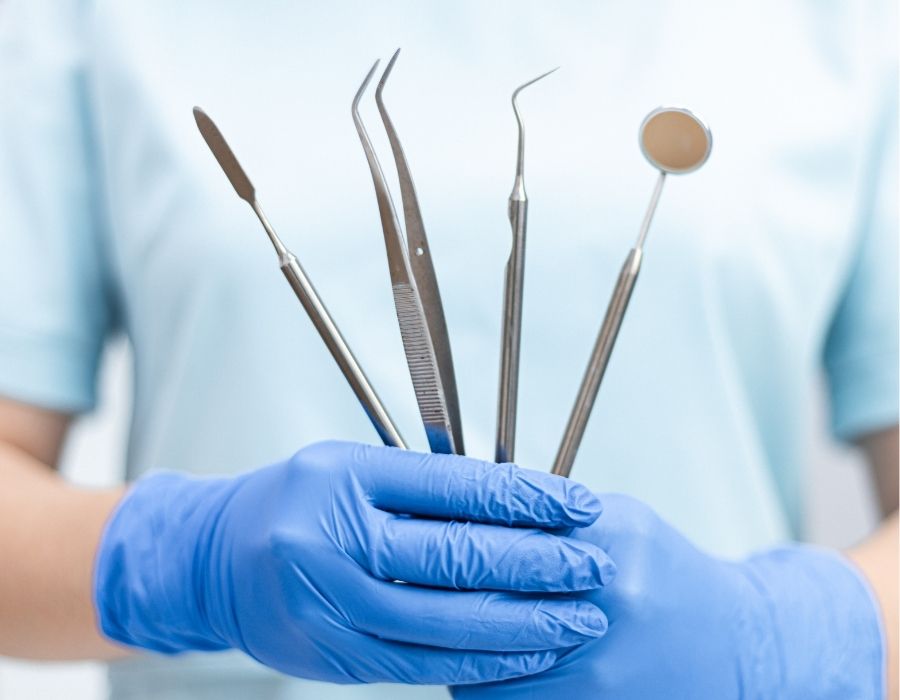Dentists are general oral health care providers who diagnose and treat various dental issues, including cavities, gum disease, and oral infections. Orthodontists, on the other hand, are specialists who focus on aligning teeth and jaws, often using braces or other corrective devices to correct misalignments and bite issues.
When it comes to keeping your smile healthy and confident, knowing the difference between dental professionals can make all the difference. Two of the most commonly confused roles are dentists and orthodontists. While they both play essential parts in oral health care, their specialties, training, and the services they provide are quite distinct. In this blog, we’ll break down the key differences between orthodontists and dentists—so you’ll know exactly who to turn to for everything from routine checkups to straightening your teeth.

What Does an Orthodontist Do?
An orthodontist is a dental specialist who focuses on aligning teeth and jaws. After completing dental school, orthodontists undergo an additional 2–3 years of specialized training dedicated to treatments such as braces, clear aligners like Invisalign, correcting bite issues including overbite, underbite, and crossbite, as well as jaw alignment and monitoring facial growth and development in children and teens. Their work goes beyond aesthetics—orthodontists help ensure that your bite functions properly, which can improve chewing, speech, and overall confidence.
What Does a Dentist Do?
A general dentist is like your smile’s primary care provider, handling routine dental care to keep your mouth healthy. They perform teeth cleanings, fill cavities, manage gum health, and provide restorative treatments like crowns and bridges. Preventive care is also a major focus, helping you avoid more serious issues down the road. Most people visit their dentist twice a year for regular checkups and cleanings to maintain their overall oral health.
Orthodontist vs. Dentist: 7 Key Differences You Must Know
1. Educational Pathways
Both dentists and orthodontists begin their journey with a dental degree, such as a Doctor of Dental Surgery (DDS) or Doctor of Dental Medicine (DMD). However, after dental school, orthodontists undertake additional specialized training. This involves a residency program focusing on diagnosing and treating misalignments of teeth and jaws, typically lasting two to three years. This advanced education equips orthodontists with the skills necessary to address complex orthodontic issues.
2. Scope of Practice
Dentists serve as general practitioners for oral health. Their services encompass routine dental care, including cleanings, fillings, root canals, and gum disease treatment. They also provide cosmetic procedures like teeth whitening and veneers. Orthodontists, on the other hand, specialize in aligning teeth and jaws. They diagnose and treat malocclusions (misaligned bites), overcrowded teeth, and other alignment issues using braces, clear aligners, and other corrective appliances.
3. Treatment Focus
While dentists address a broad range of dental issues, orthodontists concentrate specifically on correcting dental and facial irregularities. For instance, if a patient has cavities or gum disease, a dentist is the appropriate professional to consult. However, for concerns like overbites, underbites, or crooked teeth, an orthodontist’s expertise is required.
4. Use of Dental Appliances
Dentists may use tools like fillings, crowns, and bridges to restore damaged teeth. Orthodontists employ specialized appliances such as braces, clear aligners (e.g., Invisalign), retainers, and palatal expanders to move teeth into desired positions and correct jaw alignment. These devices are tailored to each patient’s unique needs to achieve optimal alignment and function.
5. Patient Demographics
Traditionally, orthodontic treatments were associated with adolescents. However, recent trends indicate a significant increase in adult patients seeking orthodontic care. Approximately one-third of orthodontic patients today are adults, up from about 20% in the early 2000s. This shift underscores the growing recognition of the benefits of orthodontic treatment across all age groups.
6. Referral Dynamics
General dentists often serve as the first point of contact for patients. They conduct routine examinations and identify issues that may require specialized care. In cases where alignment or bite problems are detected, dentists typically refer patients to orthodontists for further evaluation and treatment. This collaborative approach ensures comprehensive oral health care.
7. Treatment Duration and Complexity
Orthodontic treatments often involve longer and more complex procedures compared to general dental care. For example, wearing braces or clear aligners may require a commitment of several months to a few years, depending on the severity of the misalignment. Regular adjustments and follow-up visits are essential to monitor progress and make necessary modifications to the treatment plan.
So, Who Should You See?
Navigating the world of dental care can sometimes be confusing, especially when distinguishing between general dentistry and orthodontics. Here’s a clearer breakdown to guide you:
- General Dental Concerns: If you’re experiencing tooth pain, suspect cavities, or it’s time for your routine cleaning, your dentist is the professional to consult. Dentists focus on overall oral health, addressing issues like tooth decay, gum disease, and performing preventive care to keep your smile in top shape.
- Alignment and Bite Issues: On the other hand, if you’re noticing that your teeth are misaligned, have gaps, or your bite doesn’t feel quite right, it’s advisable to see an orthodontist. Orthodontists specialize in diagnosing and treating misalignments of the teeth and jaws, often using braces or clear aligners to correct these issues.
The collaboration between dentists and orthodontists is a cornerstone of comprehensive oral healthcare. While dentists ensure your teeth and gums are healthy, orthodontists focus on the alignment and function of your bite. Working together, they provide a holistic approach to your dental well-being, ensuring not only a healthy mouth but also a confident, well-aligned smile. So, don’t hesitate to engage both professionals as needed to achieve and maintain optimal oral health.
Navigating Your Dental Care Choices

Understanding the distinctions between dentists and orthodontists is essential for making informed decisions about your oral health. Dentists provide a broad range of services aimed at maintaining overall dental well-being, including preventive care, restorative treatments, and cosmetic procedures. Orthodontists, on the other hand, specialize in diagnosing and correcting misalignments of the teeth and jaws, focusing on treatments such as braces and clear aligners to improve alignment and bite issues.
Recognizing these differences ensures that you seek the appropriate professional for your specific dental needs. Whether it’s time for a routine cleaning or you’re considering straightening your teeth, consulting the right specialist will contribute to a healthier, more confident smile. Remember, dentists and orthodontists often collaborate to provide comprehensive care, working together to help you achieve optimal oral health.








